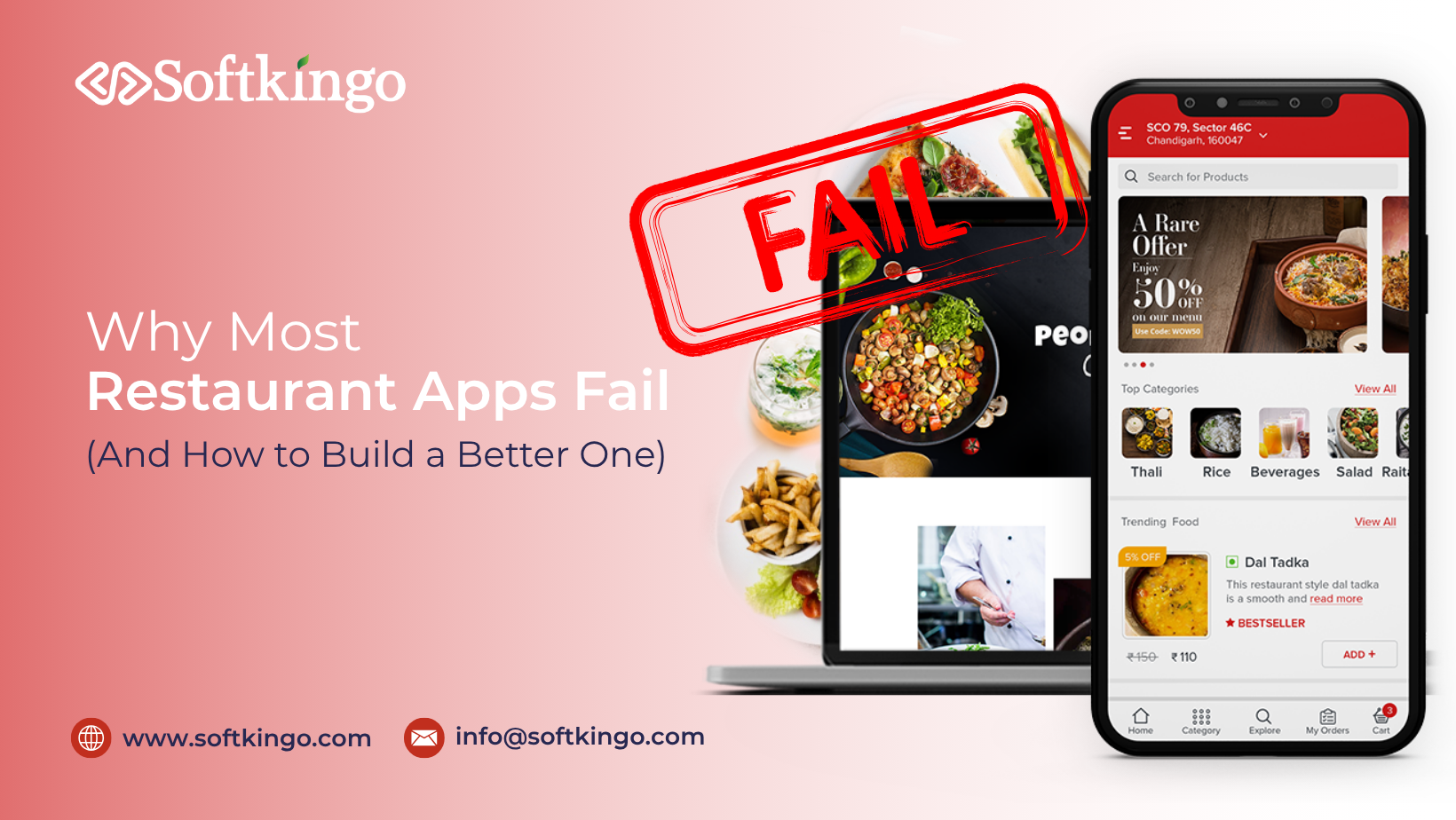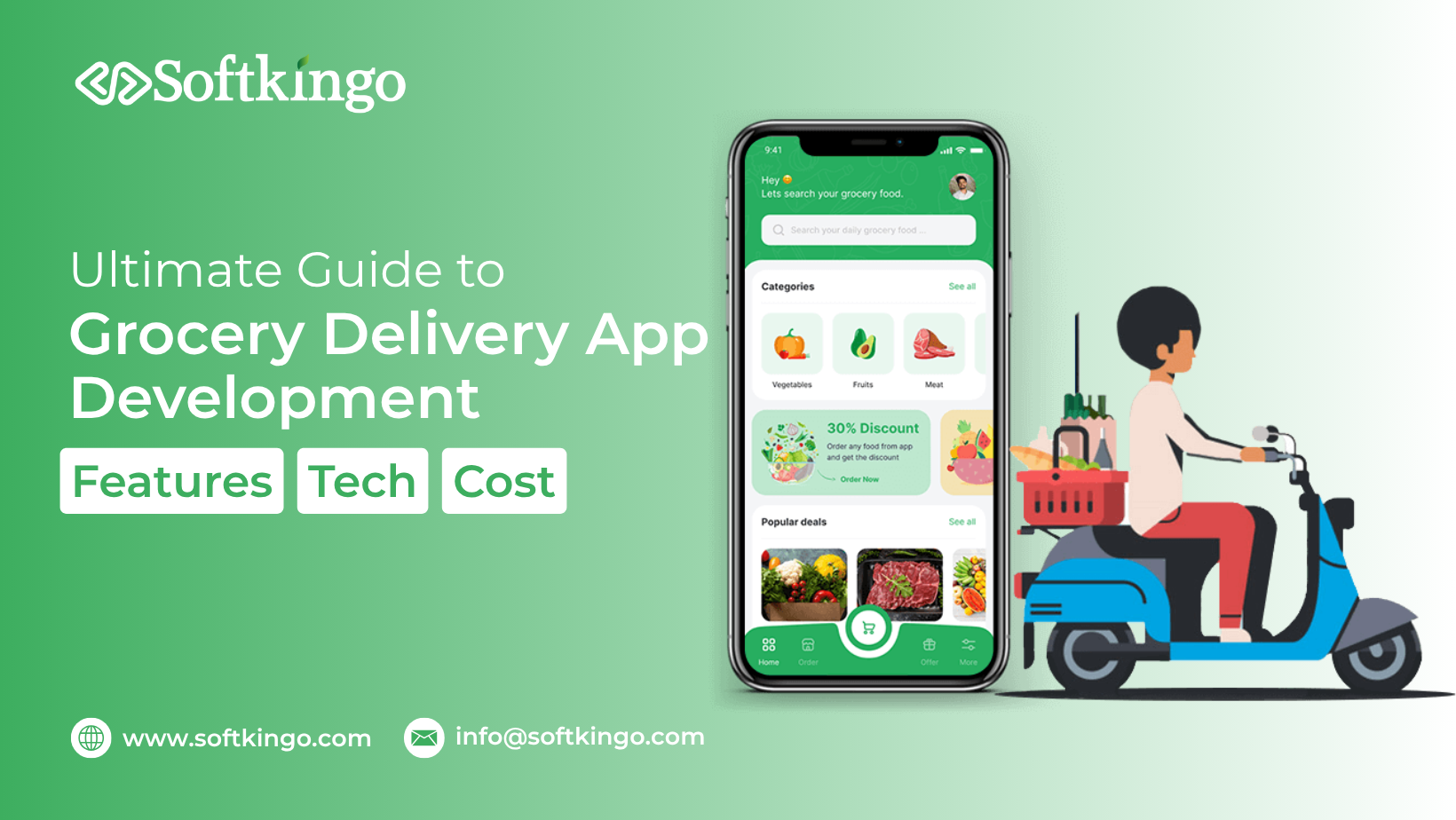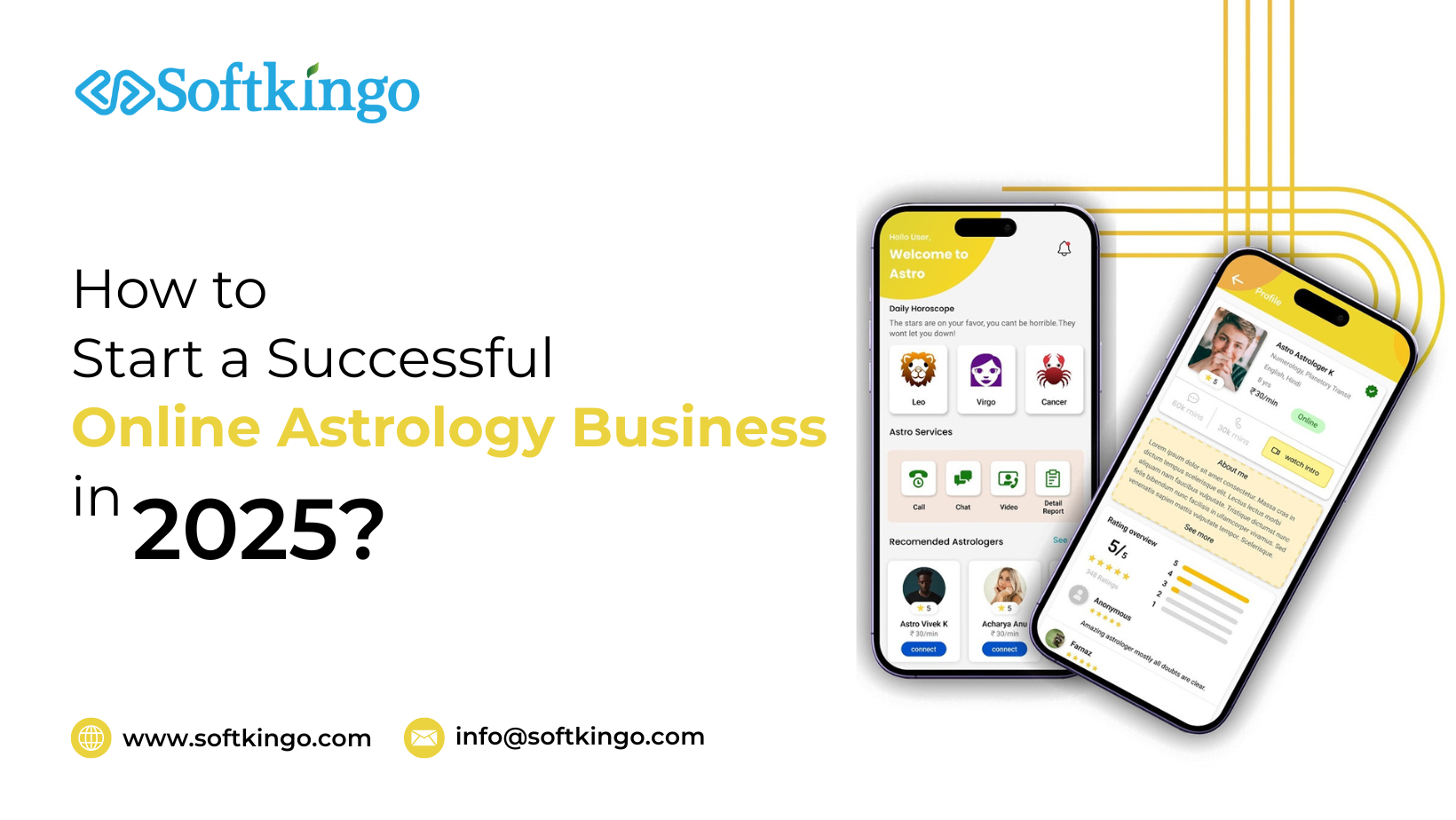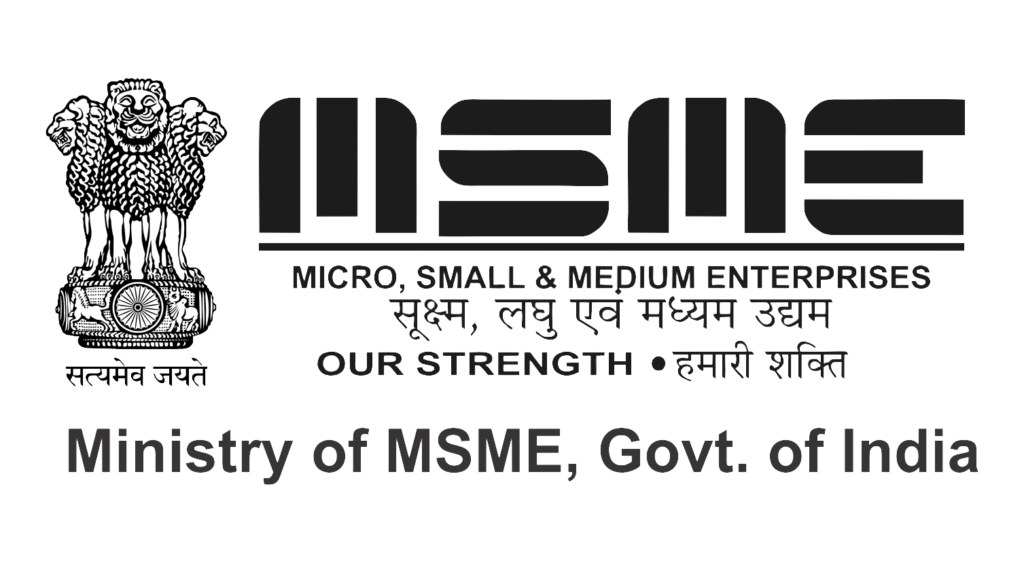How Much Does It Cost to Build a Marketplace App in 2025?
Figuring out how much it actually costs to build a marketplace app isn’t always straightforward. And truth is, jumping into development without a solid handle on the numbers can lead to blown budgets, missed deadlines—or worse, a project that never launches.
If you think building a marketplace app is only something tech giants with massive budgets can do… think again.
With the right plan, the right tech stack, and the support of an experienced mobile app development team, creating your own marketplace app is more doable than ever.
And it’s a smart move—marketplace apps now power over $7 trillion in global e-commerce sales. That number just keeps growing.
Got an awesome app idea but no clue what it would cost to bring it to life? You’re not alone. That’s why we’re here—to break it all down and answer your questions.
Here’s a quick overview:
- A basic MVP (Minimum Viable Product) usually costs somewhere between $25,000 and $60,000
- A more complex, fully featured app can run $120,000 or more
But don’t let those numbers scare you. We’ll walk you through:
- What really drives the cost of a marketplace app
- How pricing changes depending on what you want to build
- Tips to stay on budget without cutting corners
How Much Does It Really Cost to Build a Marketplace App?
A marketplace app is basically your digital middleman—connecting people who want to buy, sell, or rent things all in one place.
Now, we won’t sugarcoat it—there’s no single, set price for building one.
The cost really comes down to a few key things: who you hire to build it, how complex your features are, and how quickly you need it done.
That said, here’s a quick breakdown of what you can expect when budgeting for a marketplace app:
| Complexity | Estimated Cost | Timeline |
| Basic Marketplace App | $20,000–$40,000 | 3–6 months |
| Mid-level Marketplace App | $40,000–$100,000 | 6–9 months |
| Complex Marketplace App | $100,000+ | 9–18 months+ |
Remember, these are just rough estimates; actual costs may vary slightly depending on your app’s needs and preferences.
For more accurate information, try our mobile app development cost calculator: it will provide you with a personalized quote in minutes.
Why does building an e-commerce app cost more?
Fact: Most developers underestimate their app budget by 40% to 60%! This kind of sudden oversight can derail your entire project.
Whether you’re a beginner or an experienced developer, it’s important to understand the cost of building a custom e-commerce app.
There are several key factors that affect the price, such as the type of e-commerce you want, the features you need, and the additional systems you want to integrate it with.
What type of e-commerce are you developing?
1. Type of e-commerce
Whether you’re building an e-commerce marketplace for businesses (B2B), consumers (B2C), or any other sector, it makes a big difference.
Each type of marketplace requires different workflows, user types, and technologies, all of which determine development time and cost.
Here’s how these differences affect your budget:
| Marketplace Type | Complexity | Estimated Cost Impact |
| B2C (Business to Consumer) | Moderate | $40,000 – $80,000 |
| C2C (Consumer to Consumer) | High | $60,000 – $100,000 |
| B2B (Business to Business) | Very High | $80,000 – $150,000+ |
| Service Marketplace | High | $60,000 – $110,000 |
| Product Marketplace | Moderate to High | $50,000 – $100,000 |
| Rental Marketplace | High | $70,000 – $120,000 |
| Hybrid Model | Very High | $100,000 – $200,000+ |
2. Core Features
The core features of a marketplace app directly impact both the development cost and complexity of the marketplace app.
The more features you include—and the more complex they are—the longer it takes to build, test, and maintain the application.
That’s due to each core feature requiring dedicated time for UI/UX design, backend logic, database structure, API integration, and testing.
Below are features that will impact your marketplace app development estimate:
| Feature | Description | Cost Impact |
| User Registration & Profiles | Sign-up/login via email, social media, and personalized profiles for buyers/sellers. | $3,000 – $7,000 |
| Advanced Search & Filters | Search bar with filters by category, location, price, rating, etc. | $4,000 – $8,000 |
| Product/Service Listings | Sellers can upload, edit, and manage their offerings. | $5,000 – $10,000 |
| In-app Messaging/Chat | Enables real-time or delayed messaging between users. | $6,000 – $12,000 |
| Payment Integration | Integration with Stripe, PayPal, or other gateways may include split payments. | $5,000 – $15,000 |
| Ratings & Reviews | Users rate each other and/or products, with moderation features. | $3,000 – $6,000 |
| Order Management | Buyers can place, track, and manage orders; sellers can update the status. | $6,000 – $12,000 |
| Notifications | Email, push, and in-app alerts for user actions and updates. | $2,000 – $5,000 |
| Admin Dashboard | Backend panel to manage users, content, payments, and disputes. | $7,000 – $15,000 |
Reduce your startup costs by starting with a minimum viable product (MVP) that focuses on core features. Contact MVP development companies for support.
Are you struggling to prioritize features based on your budget?
Our team can help you quickly and cost-effectively create a minimum viable product (MVP).
3. Choosing a Platform
Choosing the right platform for developing your app on a marketplace platform significantly impacts development time, complexity, and cost.
Each of these platforms has different technical requirements, design standards, and testing processes.
Here’s the impact of building a mobile app on a marketplace platform:
| Platform | Best for | Cost Impact |
| Web App | Accessible via browser; ideal for admin dashboards and general users. | $15,000 – $30,000 |
| iOS App | Built specifically for Apple devices using Swift. Delivers top performance and UX. | $20,000 – $40,000 |
| Android App | Built using Kotlin/Java; supports a wider variety of devices. | $20,000 – $40,000 |
| Cross-Platform App | Single codebase for iOS & Android. Reduces cost and time, but may limit some native features. | $25,000 – $45,000 |
Note: Cross-platform development reduces costs by 20% to 30%, but may present limitations on advanced user interfaces or core features.
4. Technology Stack
A technology stack refers to the set of programming languages, frameworks, libraries, and databases used to develop your app on the marketplace platform.
Your decisions affect the costs of developing your app on the marketplace platform, as well as its future scalability, maintenance efforts, and staffing flexibility.
Choosing the right technology stack depends on the complexity of the marketplace platform’s features, performance requirements, and growth plans.
A well-supported technology stack reduces costs in the long run by simplifying the process of hiring developers, scaling your app, and maintaining it.
| Stack Type | Expected Cost |
| Standard Full Stack (React + Node.js + PostgreSQL) | $30,000 – $60,000 |
| Python Stack (React + Django + PostgreSQL) | $35,000 – $65,000 |
| Cross-Platform Mobile Stack (Flutter + Firebase) | $25,000 – $50,000 |
| Microservices Architecture (Multiple APIs + Containers) | $80,000 – $150,000+ |
Utilizing modern, open-source frameworks such as React, Node.js, and PostgreSQL can reduce licensing costs and attract a broader pool of developers.
5. Third-Party Integrations
Modern marketplace apps rely heavily on third-party services and APIs to extend functionality, reduce development time, and improve scalability.
Unfortunately, each integration adds to project complexity, testing effort, and marketplace app development pricing.
It is primarily important when dealing with sensitive data (e.g., payments) or custom workflows.
| Integration Type | Examples | Cost Impact |
| Payment Gateways | Stripe, PayPal, Razorpay | $4,000 – $10,000 |
| Shipping APIs | FedEx, UPS, Shippo, EasyPost | $3,000 – $7,000 |
| Authentication Providers | Google, Facebook, Apple Sign-In | $2,000 – $5,000 |
| Email/SMS Services | SendGrid, Twilio, Mailgun | $2,000 – $4,000 |
| Analytics Tools | Google Analytics, Mixpanel, and Amplitude | $1,000 – $3,000 |
| CRM/Marketing | HubSpot, Intercom, Mailchimp | $3,000 – $6,000 |
| Maps & Geolocation | Google Maps API, Mapbox | $2,000 – $5,000 |
| Tax & Compliance APIs | Avalara, TaxJar | $2,000 – $4,000 |
6. Design Complexity
The User Interface (UI) and User Experience (UX) of your marketplace app go beyond just visual elements.
They’re core drivers of user satisfaction, engagement, and conversion rates. Every dollar invested in UX yields a return of $100, resulting in a 9,900% ROI.
However, the more custom, interactive, or brand-specific your design is, the greater its impact on both time-to-build and overall cost to build a marketplace app.
A custom UI/UX design may increase upfront costs, but it often delivers long-term value in the form of a high retention rate and brand reputation.
| Design Type | Description | Cost Impact |
| Template-Based Design | Uses pre-built UI kits or marketplace templates with minimal customization. | $3,000 – $6,000 |
| Semi-Custom Design | Modifies base templates with custom branding, layouts, and UX flows. | $6,000 – $12,000 |
| Fully Custom UI/UX Design | Built from scratch with unique flows, micro-interactions, animations, and branding. | $12,000 – $30,000+ |
Check out our latest guide that breaks down AI app development costs, uncovers hidden expenses, and shows you how to manage them without sacrificing quality.
7. White-Label vs. Custom Development
One of the biggest decisions you’ll make in marketplace development is whether to build a custom app from scratch or use a white-label solution.
This choice significantly affects development cost, time to market, feature flexibility, and long-term scalability.
Here is a key comparison between the two solutions and how much it adds up in your mobile marketplace app development cost:
| Aspect | White-Label / No-Code | Custom Development |
| Initial Cost | Low | High |
| Time to Launch | 2–6 weeks | 4–6+ months |
| Customization | Limited to visual changes and pre-set features | Fully customizable |
| Ownership & IP | Typically licensed | Full ownership |
| Scalability | May hit limits with growth | Built to scale |
| Security | Depends on provider | Fully controllable |
| Maintenance | Handled by the provider | Your team manages updates |
If you go with a white-label platform, you’ll typically pay an initial setup fee between $5,000 and $20,000.
In contrast, a low-code or no-code solution using tools like Bubble or Adalo usually costs between $8,000 and $25,000.
For businesses that require custom apps, the cost can range from $60,000 to $200,000 or more.
Some startups launch with a white-label or no-code MVP, validate traction, then reinvest in a custom-built app once product-market fit is proven.
8. Development Team Location
The location of your development team is one of the most influential cost drivers in building a marketplace app.
Hourly rates, team experience, work culture, and even time zones impact not just the budget, but also communication efficiency, code quality, and project outcomes.
Here are the average hourly rates by the region that add up to marketplace pricing:
| Region | Hourly Rates | Typical Cost to Build a Marketplace App |
| North America | $100 – $200/hr | $100,000 – $250,000+ |
| Western Europe | $80 – $150/hr | $80,000 – $200,000 |
| Eastern Europe | $40 – $70/hr | $40,000 – $120,000 |
| South Asia | $20 – $50/hr | $25,000 – $80,000 |
| Southeast Asia | $25 – $45/hr | $30,000 – $90,000 |
| Latin America | $30 – $60/hr | $35,000 – $100,000 |
Choosing the lowest price can lead to higher costs in the long run due to rewrites, delays, and poor code quality. Focus on price, not just the cost of developing the app.
The Real Cost of Building a Marketplace App
Building your own marketplace app, like Etsy, eBay, Airbnb, or Fiverr, can be a lucrative venture.
With over 2.06 million apps available on the App Store and Google Play, standing out is difficult, but not impossible.
The real challenge lies in creating an effective and affordable marketplace startup.
The cost of each stage of developing a marketplace app is as follows:
Let’s take a closer look at each stage of the marketplace app development process and the associated costs:
Step 1: Market Research
Before writing a single line of code, make sure you’ve thoroughly researched your idea. This means you need to follow these steps:
Research your competitors
Talk to potential users
Research your niche
This research prevents you from creating an app that no one wants and allows you to solve a real-world problem.
You can allocate a budget of between $3,000 and $8,000, depending on the depth of your research (for example, hiring a cross-platform app development company or doing it yourself).
Step 2: Choose a Business Model
This step allows you to determine how your app will generate revenue in the marketplace.
Do you charge a small commission on each sale? Do you charge sellers a monthly fee to list their products? Do you offer featured listings for a small fee?
If you already know what you want, you can easily achieve it without spending a dime.
However, if you’re unsure or want to ensure your model is stable and scalable, you should explore the monetization models available in the marketplace. To achieve this, price your e-commerce app between $1,000 and $2,000.
This is a small investment that may save you money later.
Step 3: Plan Your Features
Now, it’s time to define your app’s features: what users can see, what they can click, and what they can experience.
You should describe all the key features for buyers, such as searching for products, making payments, and writing reviews.
For sellers, consider tools for creating product listings, managing orders, and communicating with customers.
And don’t forget the administrative aspect: someone should be responsible for managing users, managing content, and accessing data and analytics.
At this stage, it’s often advisable to collaborate with a product manager or UX specialist to explain everything clearly. This may seem like an additional burden, but investing $2,000 to $6,000 in careful planning will prevent costly mistakes and rework later.
Step 4. UI/UX Design
Design is key. A confusing or unintuitive interface can sabotage even the best ideas.
Developing a marketplace platform may require an additional budget of $5,000 to $15,000.
Pricing may vary depending on the number of screens and the level of customization required.
Effective approaches to UI/UX design include:
Creating prototypes (basic layouts);
Designing engaging prototypes (what the app will look like);
Ensuring usability and ease of use.
Need help designing a high-performance UI/UX for your marketplace app? Contact our iPhone app development experts.
Step 5. Front-end and Back-end Design
Now comes the most important task: coding.
The real development of a marketplace app begins here, with an attractive and scalable front-end and back-end.
The front-end team focuses on what users see and interact with, using tools like React Native or Flutter to create a sleek and responsive interface.
The back-end developers develop the engine behind the scenes.
If your platform is dedicated to both iOS and Android, your marketplace app development costs will quickly escalate.
It’s recommended to choose a cross-platform solution like Flutter or React Native, which allows for deployment to both platforms with just one code write.
About 70% of successful apps started with minimum viable products (MVPs): simple versions designed to test…
You should also start with a basic minimum viable product (MVP), priced between $30,000 and $50,000.
This version of your marketplace app will include basic features like user profiles, listings, payments, and search.
For a full-featured app that includes chat, real-time tracking, or advanced filters, expect to pay between $70,000 and $100,000, or more.
In short, the more features you add to your app, the longer your development will take and the higher your budget.
Step 6: Quality Testing
No one wants to release a buggy app.
The IBM Institute for Systems Science reports that fixing bugs discovered during implementation costs six times more than fixing bugs discovered during design.
Quality testing ensures that your marketplace app:
- Works on all devices
- Doesn’t crash
- Is secure
You may need to perform manual testing, automated scripts, and performance checks. This typically costs between $5,000 and $20,000, depending on the complexity of your app.
Step 7: Launching the App
Launching your app isn’t just about clicking the “Publish” button; it also requires some preparation.
You’ll first need to create developer accounts with Apple and Google, which are available at a small cost.
Prepare marketing materials such as screenshots, an app description, and perhaps a promotional video to showcase your app on download platforms.
Once these steps are complete, it’s time to move on to the App Store validation phase, which can take a few days.
Marketplace app development experts recommend allocating a budget for a soft launch or beta test to catch any last-minute issues.
Generally, budget between $2,000 and $5,000 for implementation.
Step 8: Ongoing Maintenance
Launching your Marketplace app was just the beginning; the real work begins now.
Once users sign up and start using your app, it’s important to ensure everything is working properly.
Software bugs happen (and they’re inevitable), so it’s essential to have developers available to fix them quickly.
To improve the user experience and stay competitive, you need to constantly add new features.
Furthermore, iOS and Android release updates frequently, and if your app isn’t keeping up, problems can arise.
Of course, users will have questions or need help. Therefore, customer support, such as responding to emails or managing app store reviews, is essential. To improve feedback and customer service, Marketo’s tools allow you to customize email templates, ensuring relevant communications that align with your brand.
All this work isn’t free: it can add between $5,000 and $15,000 to the cost of developing your app on the marketplace each year.
Worried about hidden costs that could hinder your project?
Our experts can help you create a budget that avoids unexpected expenses.
The Hidden Costs of Marketplace App Development
In theory, it all sounds perfect. Budget? Yes. Timeframe? Absolutely possible.
But there are hidden costs that no one warns you about.
These aren’t what you’ll find in a solid proposal or an article titled “How Much Does a Marketplace App Cost?”
They’re costs that come up later, during development or near launch, and can impact your budget and timeline. Let’s uncover the costs that aren’t typically included in pitches.
● Third-Party Services and APIs
Most marketplace apps aren’t built from scratch.
They rely heavily on third-party APIs for payments (such as Stripe or PayPal), maps (Google Maps), messaging (Twilio), authentication (OAuth and Firebase), and more.
These services are typically offered for free initially, but as the user base grows, the associated fees increase.
For example, Google Maps charges for every 1,000 requests after the free limit is reached.
If users are constantly browsing map listings, the costs can quickly add up.
Estimated cost: $1,000 to $5,000 per month or more
● Legal and compliance costs
If your marketplace app handles personal data, payments, or user-generated content, it’s important to consider these costs.
GDPR, CCPA, and PCI compliance are certain compliance requirements that you can’t overlook.
Hiring an expert marketplace app development company or a compliance expert isn’t optional if you want to avoid fines or takedown notices.
In fact, big names like Amazon, eBay, Etsy, and Shopify, which operate globally, strictly comply with laws in every country they serve.
Estimated Cost: $3,000 – $20,000+
● Fraud Prevention and Monitoring
Online marketplaces are vulnerable to fraud, which can take the form of fake listings, payment fraud, or user abuse.
To combat this, you’ll need to implement (and possibly employ) a rigorous fraud detection system.
This may include investing in fraud detection software, developing machine learning models, or hiring moderators.
For this reason, 24/7 monitoring support is sometimes considered a best practice, especially if you’re expanding internationally.
Estimated Cost: $2,000 to $10,000 per month (tools and equipment)
● Performance and Scalability Improvement
Everything might work with 100 users, but what if activity peaks with 10,000 users?
When developing online marketplace applications, it’s essential to invest in infrastructure that facilitates scalability, including load balancers, caching strategies, and server monitoring.
Hiring DevOps engineers or cloud experts to ensure optimization and availability is an additional cost.
Estimated cost: $10,000 to $50,000 or more
● Technical debt
Technical debt arises from prioritizing rapid delivery over code mastery.
Bugs, operating system updates, feature requests, security patches: it’s a never-ending cycle.
If some bugs go unnoticed during initial development (which is common to save time), you’ll pay the price later in the form of technical debt.
Estimated cost: 15-20% of annual development costs
● App store and platform fees
This is a hidden cost of developing marketplace apps, and it increases gradually every year.
If you plan to launch a mobile version of your marketplace app (and let’s be honest, most users expect this), you’ll have to pay to access the major app platforms.
- Apple Developer Account: $99 per year
- Google Play Developer Account: $25 (one-time payment)
- Marketplace Fees: Apple and Google charge a 15% to 30% commission on in-app purchases or digital transactions.
If your app offers digital services, subscriptions, or accepts payment via in-app purchases, this pricing structure directly impacts your bottom line.
How can you optimize your app development costs for the Marketplace?
Creating a Marketplace app isn’t easy, but it doesn’t have to be a huge budget-buster.
With the right strategy, smart tools, and a focus on the essentials, you can create a high-performance, efficient product that delivers real value.
If you’re a startup founder, entrepreneur, or team member with a great idea but a limited budget, cutting development costs is likely your top priority.
Fortunately, there are effective ways to cut costs without compromising quality.
Here’s how to manage your app development costs:
Tip 1: Start with a clear and focused minimum viable product (MVP)
One of the most common reasons marketplace apps go over budget is because they were developed too quickly and at scale.
Create an MVP: a simplified version of your app that includes only the essential features needed to prove your idea.
Studies show that an MVP can reduce costs by up to 60% by focusing on essential features, minimizing wasted effort.
For a marketplace app, it should include the following:
| Must Have | Should Have | Could Have |
| User Registration | Reviews and Ratings | Wishlist or Favorites |
| Product/Service Listings | Social Login Integration | Multi-language Support |
| Search/Filter Functionality | Advanced Filtering (e.g., geolocation, calendar) | – |
| Messaging System | – | – |
| Payment Gateway Integration | – | – |
Avoid unnecessary elements (such as reviews, AI recommendations, and complex analytics dashboards) until your idea is validated and promoted.
Tip 2: Use a pre-built technology stack
There’s no need to reinvent the wheel.
There are many easy-to-use tools, frameworks, and APIs designed specifically for marketplace apps.
In fact, using existing technologies and tools to develop marketplace apps can save up to 70% compared to building from scratch.
For example:
- Firebase or Supabase for the backend
- Stripe or PayPal for payments
- Algolia for search
- SendBird or Twilio for chat
- Bubble or Glide for less powerful, no-code products
- Using pre-built tools can significantly reduce time and costs, especially in the early stages of development.
Tip 3: Outsource wisely
Hiring a full-time in-house team can be expensive, especially if you’re just starting out.
A reasonable option is to work with freelancers or marketplace app development experts.
Don’t go for the cheapest option; choose developers with experience and high ratings in the marketplace.
An expert charging $50 per hour can get the job done faster and better than a beginner charging $20 per hour.
Consider hybrid teams or a small internal team (such as a product manager and a designer) with external developers for feature development.
Tip 4: Design Before Code
It’s tempting to jump right into developing marketplace apps, but don’t wait.
Every hour a developer spends rewriting logic due to unclear requirements is a waste of money.
Invest in wireframes and prototypes first. Tools like Figma or Adobe XD can help you visualize your app’s workflow and design.
Getting feedback on these prototypes early will save you a lot of rework later.
Tip 5: Avoid Feature Cramming
Feature cramming gradually drains your budget.
This happens when you add “one more element” to the project scope until its size and cost increase.
According to the 80/20 rule (Pareto principle) in product design, only 20-30% of a standard app’s features deliver the highest value to users.
Stick to your minimum viable product (MVP) plan. Gather user feedback first, and prioritize new features based on their actual needs, not assumptions.
Tip 6: Test early and often
Fixing bugs discovered late in marketplace app development is expensive.
Establish a culture of continuous testing at every stage of development, from unit testing to user testing.
Invite real users to test your minimum viable product (MVP) early. This will help your team spot usability issues before they turn into costly bugs.
Are you ready to build your marketplace app?
Typically, the cost of developing an e-commerce app varies widely, from $10,000 to $300,000, or even more, depending on the complexity, features, and location of the development team.
If you have a solid idea and a clear vision, starting with a small, testable version is the best option.
At Softkingo, we’ve helped ambitious startups and large enterprises transform their innovative ideas into reliable, high-performance digital products.
One of our most notable achievements is the GoTo app and website, a platform designed to handle high daily traffic and deliver a seamless user experience at scale.
GoTo receives 80 million user requests daily and records over 100,000 downloads; these numbers are no coincidence.
These numbers are the result of deep technical expertise, meticulous design, robust back-end engineering, and continuous performance optimization.
If you’re serious about launching a scalable, adaptable, and high-performance e-commerce app, contact us. Want to realize your marketing vision? Our team is ready to build a scalable, high-performance app, tailored to your needs.
Q1. How much does it cost to build a marketplace app like Amazon?
Let’s be honest—building something like Amazon isn’t cheap. If you’re going for a full-featured marketplace with all the bells and whistles, you’re likely looking at $100,000 to $300,000+. The final number depends on what features you need, which platforms you’re targeting (iOS, Android, web), and who’s building it.
Q2. Why are marketplace apps so expensive?
Because they’re a lot. You’re not just building one app—you’re building two: one for buyers, one for sellers. Then throw in payments, real-time messaging, user profiles, search, security, and the list goes on. It takes serious time and skill to get it all running smoothly.
Q3. How long does it take to build one?
If you’re starting with a basic MVP (a stripped-down version just to test your idea), you might be able to launch in 3 to 6 months. But if you’re building a big, feature-rich marketplace? Expect 9 to 18 months—sometimes longer. Quality takes time.
Q4. What does the process look like?
Here’s the short version of how things usually go:
- Pick your niche (Who’s your audience?)
- Check out your competition (What are others doing?)
- Sketch out your idea (Wireframes & workflows)
- Choose your tools (Tech stack)
- Build your MVP (Start small, learn fast)
- Test it like crazy
- Launch
- Listen to feedback and keep improving
It’s not magic—but it does take planning, patience, and a good team.
Q5. Do I need to build separate apps for iOS and Android?
Not always. You can save time and money by building a cross-platform app (one codebase that works on both). But if you’re all about top-tier performance and native feel, going with separate iOS and Android apps is usually the better choice.
Q6. What if I want to build just a marketplace website?
Totally doable. A marketplace website usually starts around $20,000, but a high-end custom site with advanced features can easily pass $100,000. Again, it depends on what you want it to do and how complex the backend is.
Q7. Is building a marketplace app hard?
It’s definitely not a weekend project—but it’s not impossible either. You’re creating something that handles users, transactions, listings, chats, and more. It takes work, but with a clear vision and the right team behind you, it’s 100% within reach.
Paramhans Singh is the CEO and founder of Softkingo Technologies, bringing over 8 years of experience in delivering custom software solutions that help startups and enterprises achieve their business goals. He has successfully validated more than 220 app and website ideas and delivered over 100 tailored solutions, utilizing a range of technologies such as Swift, Kotlin, React Native, Flutter, PHP, RoR, IoT, AI, NFC, AR/VR, Blockchain, and NFTs.

















